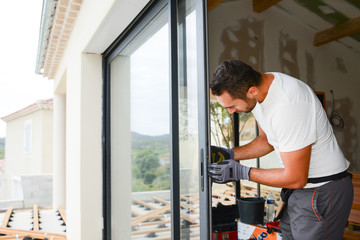Windows are more than just openings in a wall; they shape the look, feel, and efficiency of a building. A well-planned window installation enhances natural light, improves ventilation, and can dramatically boost the overall appearance of a home or office. Whether you’re renovating, building new, or upgrading old fixtures, understanding the process and benefits of proper window installation can help you make smarter decisions for your space.

Why Quality Window Installation Matters
Windows are integral to the comfort and energy performance of a property. Poorly installed windows can lead to drafts, water leaks, and higher utility bills. In contrast, correctly fitted windows seal your interiors from the elements, reduce noise, and provide a secure barrier. Investing in quality installation ensures that you get the full benefits of your chosen window style and materials, and that the frame and glass perform as intended for many years to come.
Planning Ahead
Every successful window installation starts with proper planning. Before any work begins, measure the existing openings accurately and consider the architectural style of the building. Think about the function of each space — living areas may benefit from large picture windows, while bathrooms may require smaller, frosted options for privacy.
Another crucial step is determining your budget. This will guide your choice of materials and styles, from simple single-hung designs to complex bay or casement windows. Preparing ahead also means checking that all tools and materials are ready so installation can proceed smoothly and without delays.
Choosing the Right Windows
Selecting the appropriate type of window is just as important as installing it correctly. Different designs serve different purposes. Sliding windows save space and are easy to operate, while double-hung styles allow for flexible ventilation. Larger windows bring in more daylight, which can make rooms feel bigger and more inviting.
Material choices also influence durability and maintenance. For example, frames made from sturdy composites or treated wood offer aesthetic appeal and longevity, while other materials may emphasize affordability or insulation. Consider your local climate, the direction your windows face, and the overall energy efficiency you’re aiming for when making your choice.
Preparing the Opening
A proper fit starts with a clean, level, and correctly sized opening. Before placing the new window, remove any old caulking, debris, or damaged materials around the frame. This prevents future issues with sealing or alignment. Make sure the sill is level and the sides are plumb, as even slight deviations can cause operational problems later.
If you’re replacing old windows, inspect the surrounding structure for damage or rot. Addressing these issues first helps ensure that your new window sits securely and performs well over time.
The Installation Process
Once the opening is prepared, it’s time to set the new window. Typically, this involves carefully placing the window into the opening, checking that it’s level, plumb, and square, and then securing it with the appropriate fasteners. Shims may be used to make fine adjustments and ensure a snug fit.
After the window is anchored, apply flashing tape or other waterproofing materials around the edges. This prevents water infiltration, one of the most common problems with poorly installed windows. Then, seal the perimeter with high-quality caulk to create an airtight and watertight barrier.
Insulation and Sealing
Even the best window can underperform if gaps are left unsealed. Once the unit is secured, fill any small spaces between the frame and the wall with insulation designed for windows and doors. This helps minimize drafts and maintain indoor temperatures.
Pay close attention to the interior trim as well. Properly fitted trim not only looks neat but also protects the edges of the window opening from wear and tear.
Safety and Precision
Window installation may seem straightforward, but it requires precision and adherence to safety guidelines. Windows can be heavy and awkward to handle, so using the right equipment and enlisting assistance for large units is essential. Taking precautions to prevent falls or injuries when working at heights also protects both the installer and the property.
Finishing Touches
The last step involves installing interior and exterior trim, painting or staining as needed, and ensuring the window opens, closes, and locks smoothly. Clean the glass and frame to remove any construction debris. A final inspection ensures there are no gaps, leaks, or alignment issues. These finishing touches not only complete the look but also verify that the installation will stand the test of time.
Long-Term Maintenance
Proper installation sets the stage for years of reliable performance, but regular maintenance keeps windows in top shape. Clean the glass and frames periodically to prevent the buildup of dirt or mold. Check seals and caulking annually and reapply if necessary. Lubricate moving parts to maintain smooth operation.
By keeping up with simple maintenance, you extend the life of your windows, preserve their efficiency, and maintain your property’s curb appeal.
The Benefits of Professional Installation
While some homeowners may be tempted to install windows themselves, professional installation offers significant advantages. Experienced installers bring specialized knowledge, ensuring that measurements are exact and materials are handled correctly. They’re also familiar with building codes and best practices, which reduces the risk of costly mistakes.
In many cases, professional installation may also include warranties on labor, providing peace of mind if any issues arise later. For those who value time, safety, and long-term performance, entrusting the job to experts can be a smart investment.
Enhancing Your Space
Windows play a major role in how your home or office feels. They frame your view of the outside world, regulate natural light, and contribute to energy efficiency. By carefully planning, selecting quality materials, and ensuring correct installation, you can transform your space both visually and functionally.
Whether you’re replacing outdated models or adding new ones to a renovation, each properly installed window adds value, comfort, and beauty to your property. With the right approach, window installation becomes not just a technical task but a way to elevate your living or working environment.